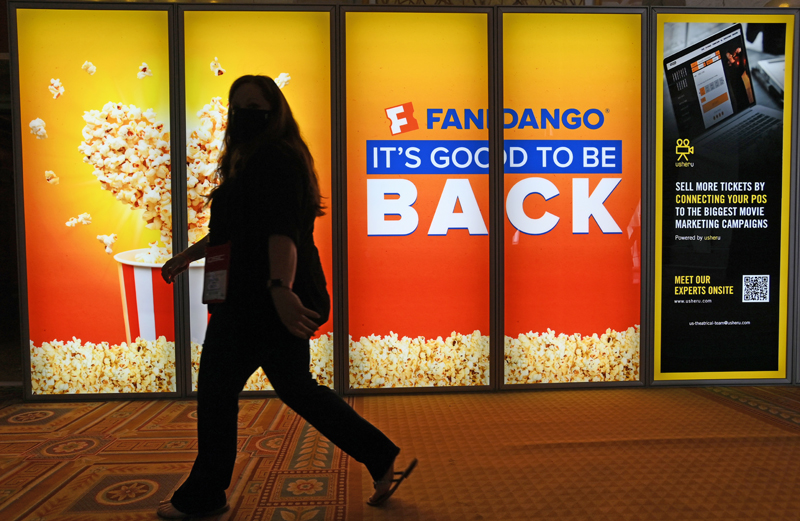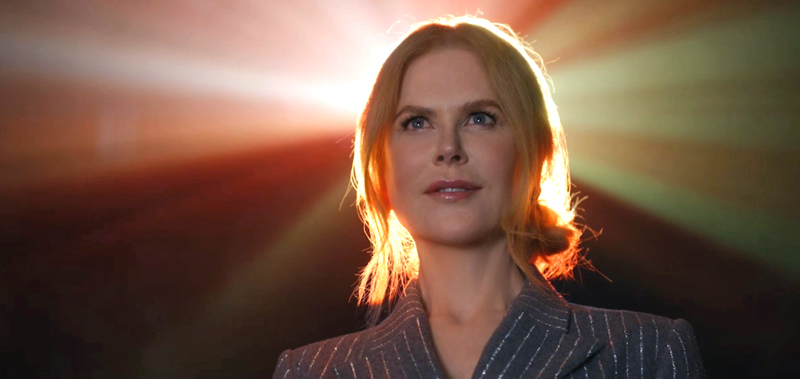
After pundits emphatically proclaimed cinema-is-dead/won’t ever come back during the 2020-21 pandemic lockdown, exhibition enjoys a surprisingly swift comeback in 2022.
That bounce-back is well deserved. The reasons?
Competition from video streaming suddenly diminished when downbeat Netflix earnings April 19 lowered the perceived sky-is-the-limit upside of video streaming. Streamers gushing red ink from pricey original programs are cutting back.
Sony Pictures Entertainment generated an astronomical $1.9 billion in global boxoffice from Christmas release “Spider-Man: No Way Home,” despite lingering drag from Covid. It’s the third-highest-grossing film of all time (without adjusting for inflation). Up next with expected blockbuster boxoffice are other only-in-theaters: Walt Disney Studios’ comic book adaptation “Doctor Strange in the Multiverse of Madness” and Paramount Pictures’ “Top Gun: Maverick.”
Further, exhibitors doggedly continue to invest in cinema (more on this below). The annual CinemaCon gathering of movie theaters in Las Vegas in late April, organized by trade group the National Assn. of Theatre Owners, occurred just as these and other positive events converged (cover image is from the CinemaCon trade show last summer).

CinemaCon is the annual theater industry love-fest that became a revival meeting.
In one example on spending by cinemas, “Last month, AMC announced it was investing $250 million to bring Cinionic’s laser projectors to 3,500 of its U.S. auditoriums by 2026,” wrote Sarah Whitten on investing/financial platform CNBC.com. “Laser is largely considered a step-up from digital projection, offering brighter pictures, and therefore, a crisper image. The bulbs also do not need to be replaced multiple times a year, meaning upkeep is much easier for theater operators.” Laser projection, industrial-quality audio and plush seats are also a leg up on pricey home theater projections systems, which can’t match the wallop of a movie theater.
Cinema’s strongest endorsement comes from Hollywood, which loves cinema economics. The per capita take (called a “rental”) from each cinema ticket is around $6, which is far more than other windows like streaming.
Further, a blockbuster in cinema electrifies the public with lines around movie theaters (visual to anyone out and about) and media coverage.
Cinema company earnings are coming in strong, though it’s an easy comparison to year-ago deflated by the Covid pandemic. But make no mistake that the movie theater business is tough as mature with low growth prospects. The industry is also unattractive because it requires constant capital expenditures, such laser projectors. Large U.S. circuit AMC Entertainment is bloated with heavy debt, which will have a day of reckoning. But debt-heavy companies restructure and continue, if their underlying business remains viable.
The gloom-and-doom pundits from 2020-21 had it all wrong from the get-go. If cinema is dead, so would live music concerts, which are booming again. And nobody would go to stadiums to see live sports when games are on TV. All the usual bogus rationalizations also apply to concerts and sports — too expensive (concert tickets priced at hundreds of dollars still sell!), sticky floors, expensive parking and needing a babysitter for the kids at home.
The pundits arguing those points against cinema conveniently forgot to mention concerts and in-stadium sports in their reasoning, which are glaring omissions.
The doomster pundits also advocate concentrating distribution on a streaming first strategy which blithely sweeps aside or greatly diminishes the traditional “sequential distribution.” That’s a preplanned succession of windows cinema, premium-VOD, regular streaming, premium pay cable TV, basic cable, etc. That sequence allows the same movie title to milk money from multiple media stops over the course of two years.

Major movie studios are back to sequential distribution for their big films that start “In Theaters Only.” Warner Bros. Pictures released its big movies last year simultaneously on corporate sibling HBO Max to bolster that startup streamer. But this year returned to an exclusive cinema window. For most titles, that’s 45 days. For “Spider-Man: No Way Home” the exclusive theatrical window stretched 88 days, as Sony Pictures opted to hold off streaming to protect the cinema run while movie theaters generated decent boxoffice.
While blockbusters like “No Way Home” are a proof-of-concept for the viability cinemas, a short-term problem still looms. In its earnings report May 6, #3 U.S. movie theater circuit Cinemark sees a shortage of theatrical films for the rest of the year. That’s mainly due to titles originally slated for 2022 moving into next year and, secondarily, because of production disruptions due Covid.
Note that medium and small films will probably rely on a hybrid streaming-cinema release; movie theater owners have indicated they are open to booking such hybrid films, depending on circumstances.
The pandemic resulted in a net loss of around 2% of screens over the past two unusual years in the U.S., which still leaves over 40,578 U.S. screens nationwide, according to major studio trade group the Motion Picture Assn. Amid uneven re-opening, it’s hard to get a reliable count of screens and so be ready for downward revisions. The small subsection of drive-in theaters actually flourished when indoor gatherings were nixed.
There are two advantages to dumping sequential distribution for all-windows-at-once to streaming — deterring piracy with wide initial release since there’s little held back and fast-recognition of income. But those benefits are outweighed by bigger paydays from stitching together multiple major windows and the marketing wallop from cinema release achieved with traditional sequential distribution.
Related content:
Leave a Reply